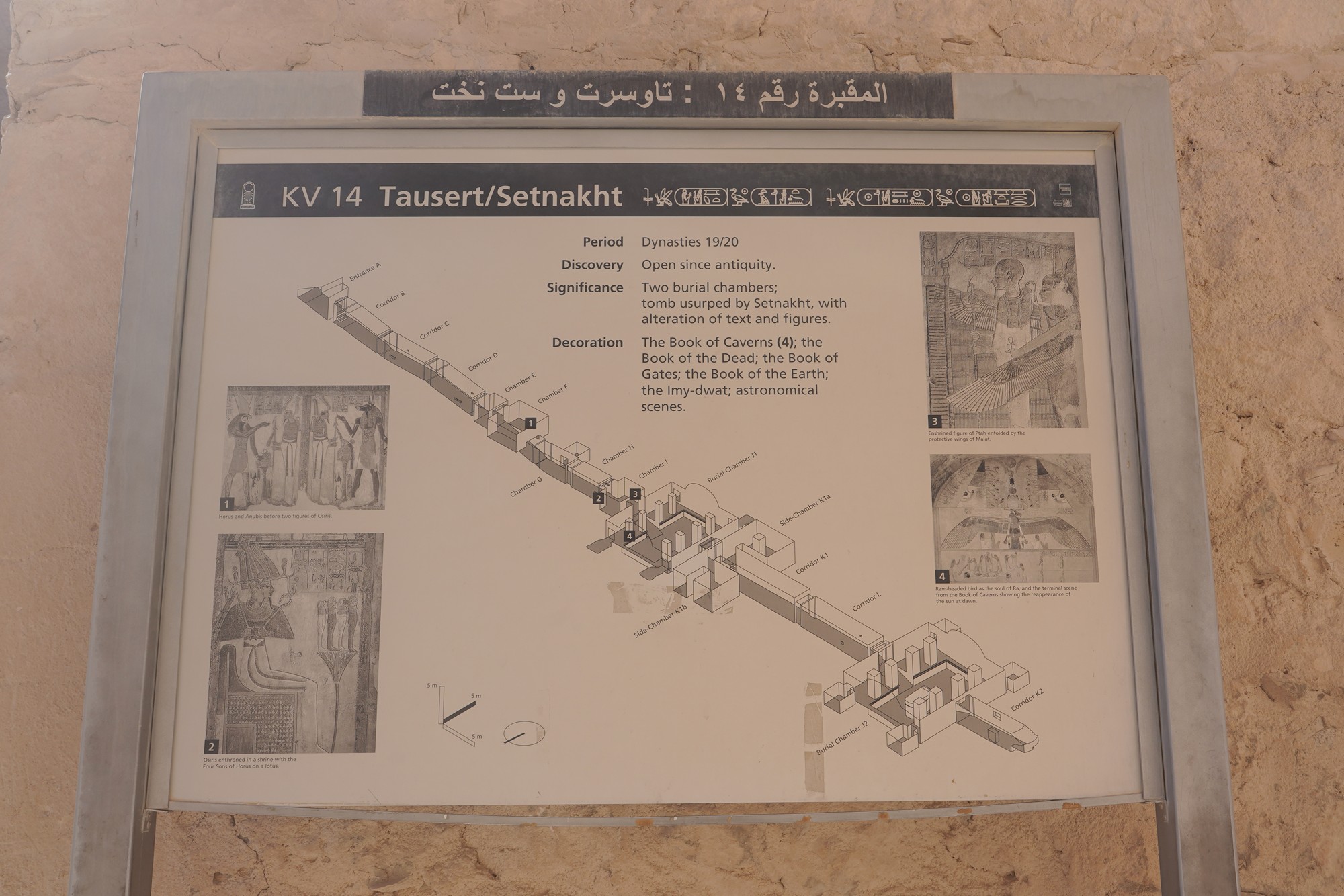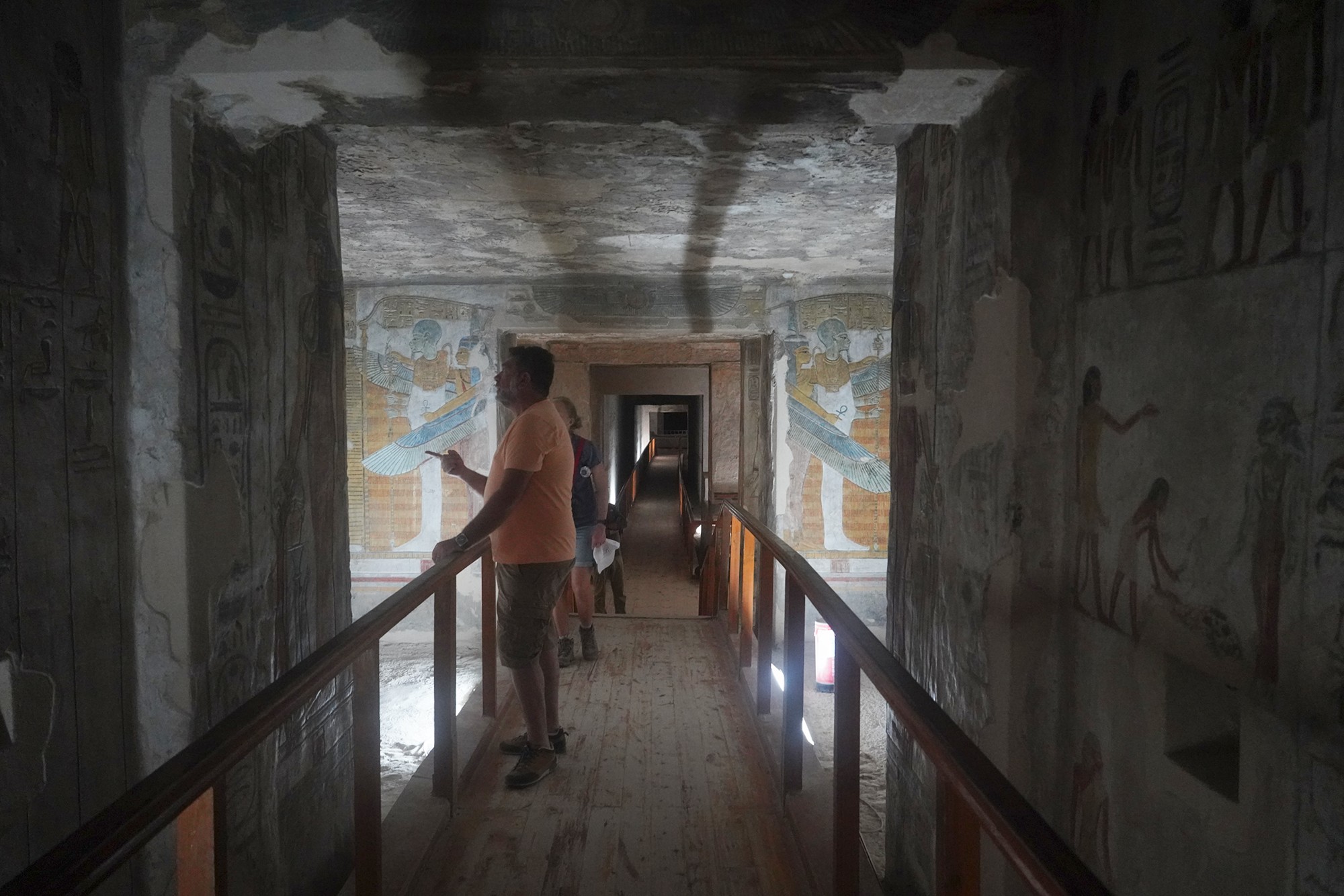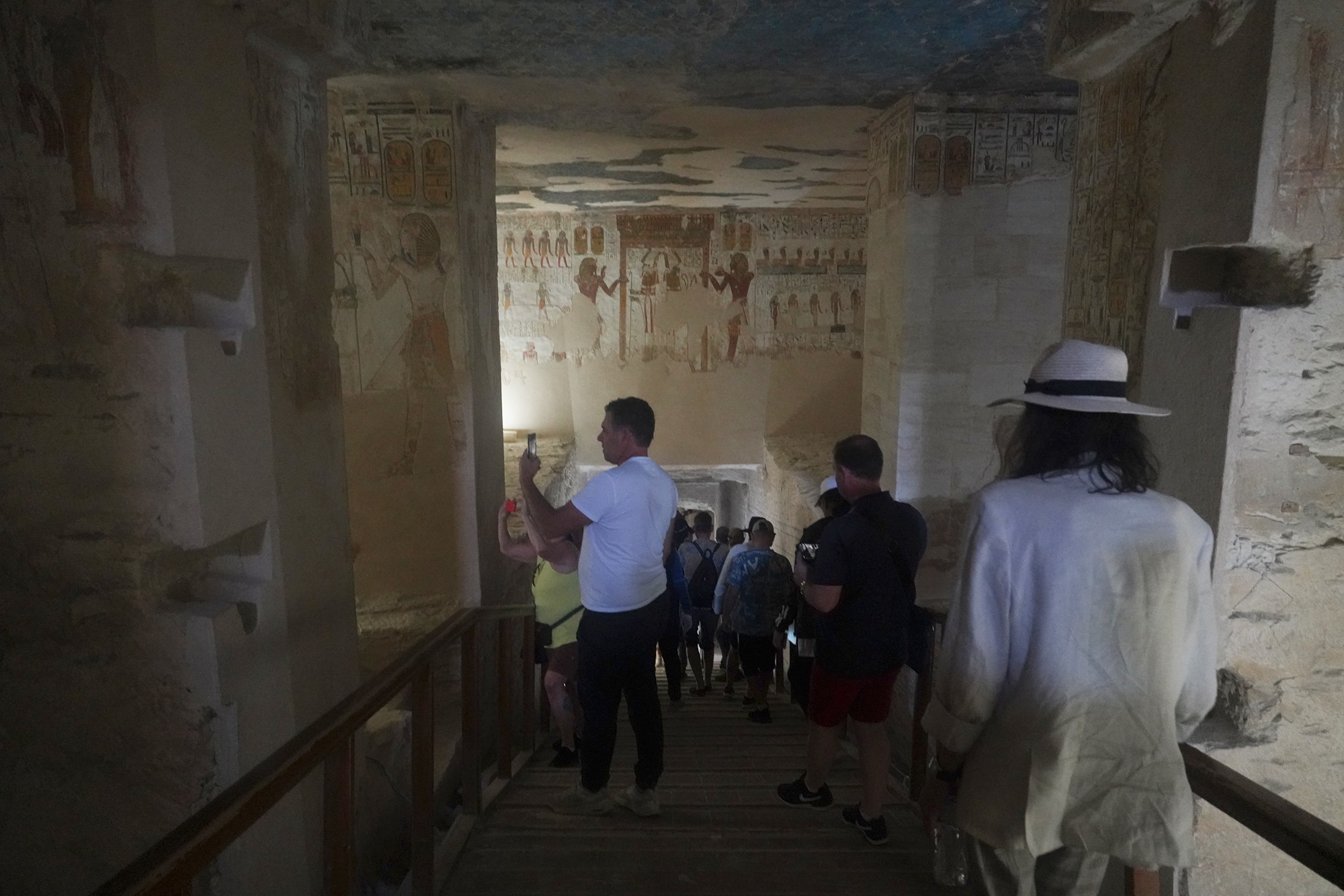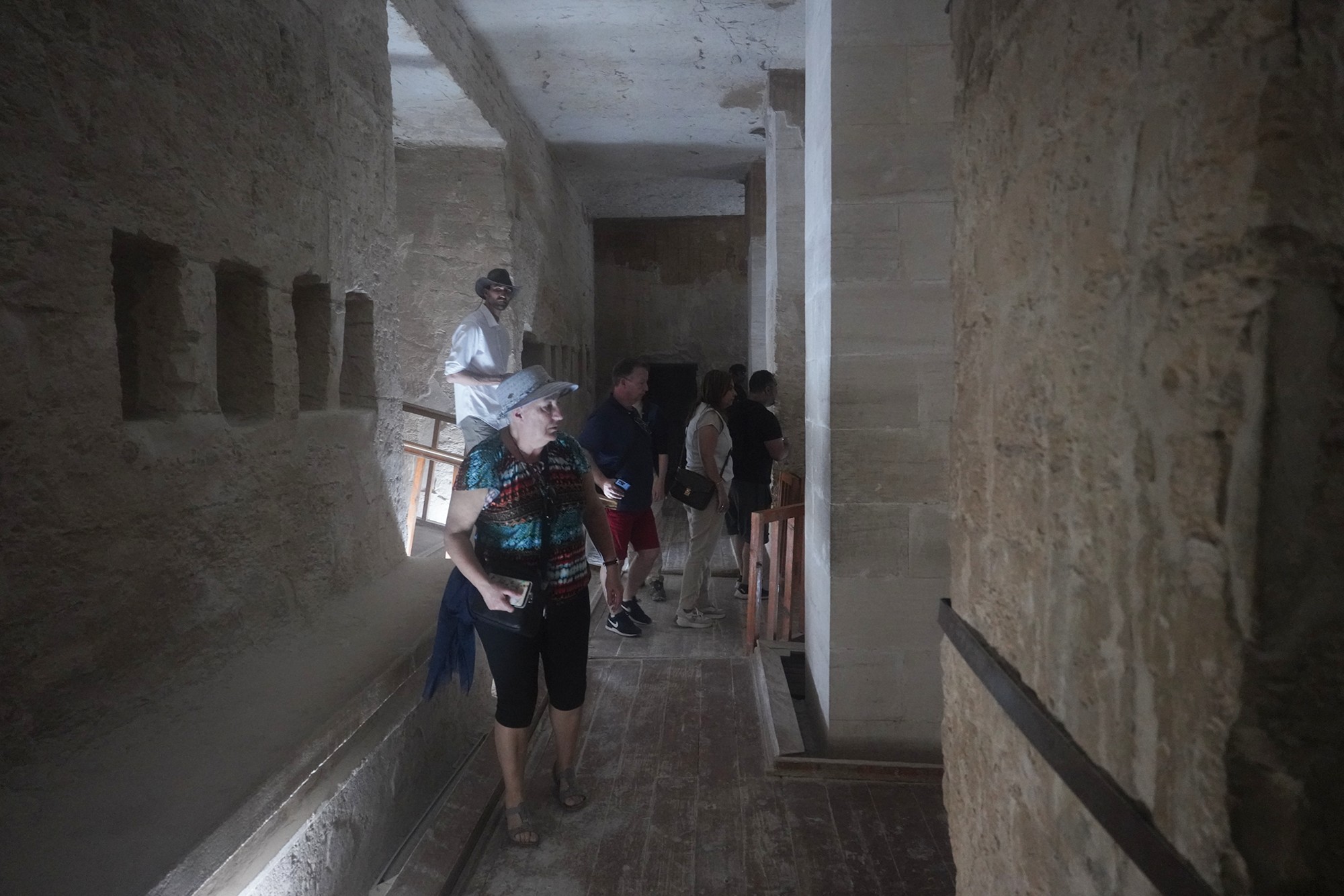Valley of the Kings, Ramses I, Tausert/Setnakht and Merenptah Tombs, Luxor, Egypt
Another set of three tombs in the Valley of the Kings. 839
Valley of the Kings: The New Valley Governorate 1413101, Egypt
Date Picture Taken: February, 2024
On the second visit to the Valley of the Kings, I had to purchase the general ticket to the valley which entitled me to see three tombs. I took the opportunity to visit the tombs that were less visited.



Ramesses I was the founder of the 19th Dynasty of ancient Egypt, and he ruled for a brief period around 1292–1290 BCE during the New Kingdom. His reign marked the beginning of a new era following the controversial religious reforms of Akhenaten. Ramesses I played a crucial role as a military commander and served as vizier to Pharaoh Horemheb before ascending the throne. Despite his short reign, Ramesses I initiated some construction projects, and his mummy, discovered in the late 19th century, revealed that he died in his early fifties. His son, Seti I, succeeded him and went on to become a significant pharaoh of the New Kingdom. Ramesses I’s contributions laid the foundation for the powerful and influential Ramesside dynasty.




The tomb can be reached by descending a steep stairway. Once you arrive, you will find that it consists of a single room that contains the coffin.

Unlike other graves, this one has blue paintings all over it. I walked around the casket.









KV 14. This tomb is shared by two persons.
Tausret was the wife of Seti II from the 19th dynasty. She assumed the throne after the death of her husband, Seti II, and possibly served as a regent for her stepson, the young pharaoh Siptah.
She was buried in one of the longest tombs in the valley, but her tomb was taken over by Setnakht, the first ruler of the 20th Dynasty and the successor of her husband Seti II.











The left side

A long hallway without color paintings



The coffin room

The room without elaborate decorations.


Walked back to the entrance




Some color decorations was near the entrance



The next tomb is KV 8, Merenptah.
Merenptah’s reign is estimated to have been from around 1213 to 1203 BCE, succeeding his father Ramesses II. His accession to the throne marked the end of the long and prosperous rule of Ramesses II.


His tomb is also without elaborate colorful decorations.





A long hallway leads to the coffin room


The coffin room

Returning to the entrance


Turned around and looked back




